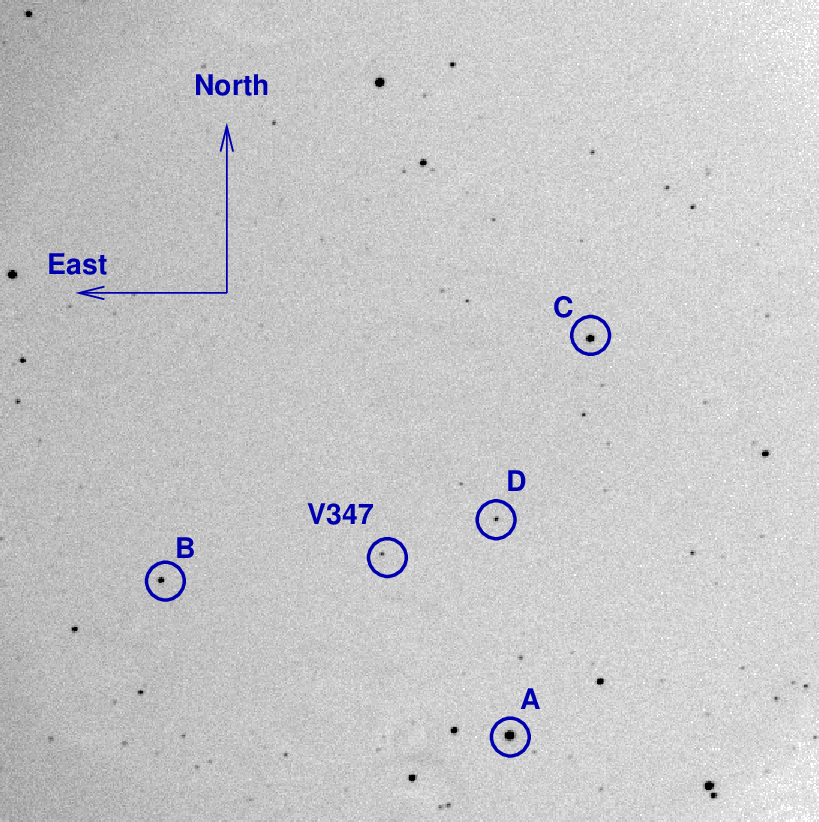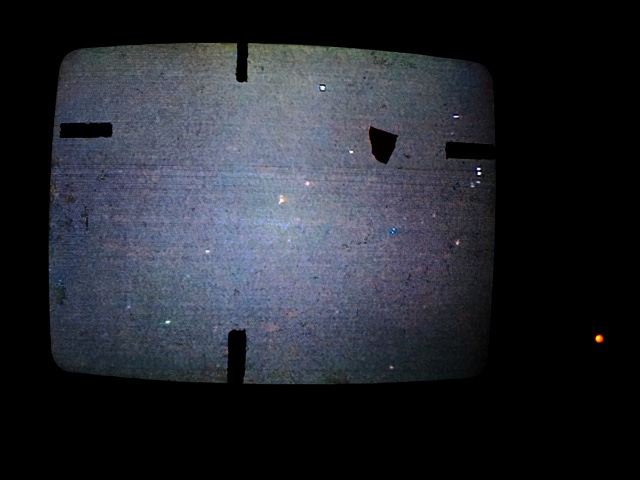
On the night of Aug 10/11, 2023, under very poor conditions, I acquired images of V347 Aur as part of our optical monitoring program. All data was taken with the 12-inch telescope and ASI camera. The results were not very good, due to consistent cloud cover.
It seems that V347 is bouncing up and down on a nightly basis by about 0.5 mag.
V347 Aur is a young stellar object (YSO) which undergoes semi-periodic outbursts. I'm part of a team of astronomers who have applied for (and received) time on the XMM-Newton X-ray telescope to study this object in the fall of 2023. We have organized an observing campaign with the AAVSO to monitor the object in the optical in order to determine when the outburst begins -- if it begins! Our prediction is some time in mid-August, 2023.
These observations involved:
Notes from the night:
The position of the variable star is
RA = 04:56:57.02 Dec = +51:30:50.9
At quiesence, it has magnitude V = 16-ish, but can rise to V = 12 in an outburst.
Here's a chart from the DSS2 Red plates, 0.6 degrees on a side.

The picture below, based on a stack of images taken on UT Jul 23, 2023, shows the area in the red box above. The variable is at its quiescent level in this image.

I've marked the location of several comparison stars.
star AAVSO ID B V ------------------------------------------------------ B 140 15.134 14.001 C 127 13.617 12.660 D 154 17.491 15.361 --------------------------------------------------------------------------
Here's a picture of the guider TV when pointed at the field (pointed slightly to the left of the variable, actually).

In this run, I took over 216 images of the field, but many of those were ruined by clouds; the first half of the run was more affected. The last hour, on the other hand, when the field was higher in the sky, was not bad. I chosed "good" images by requiring that my software could find at least 100 stars in each image; there were a total of 95 which met that criterion. I combined all of them together via a median technique to create a single image with effective exposure time (95 x 20 s = 1900 s = 31.7 minutes), which I used for subsequent analysis.
I reported the following to AAVSO:
JD filter mag
---------------------------------------------------
2460167.85 V 15.36 +/- 0.25
---------------------------------------------------
The variable is bouncing around a bit, slightly above its quiescent level.
